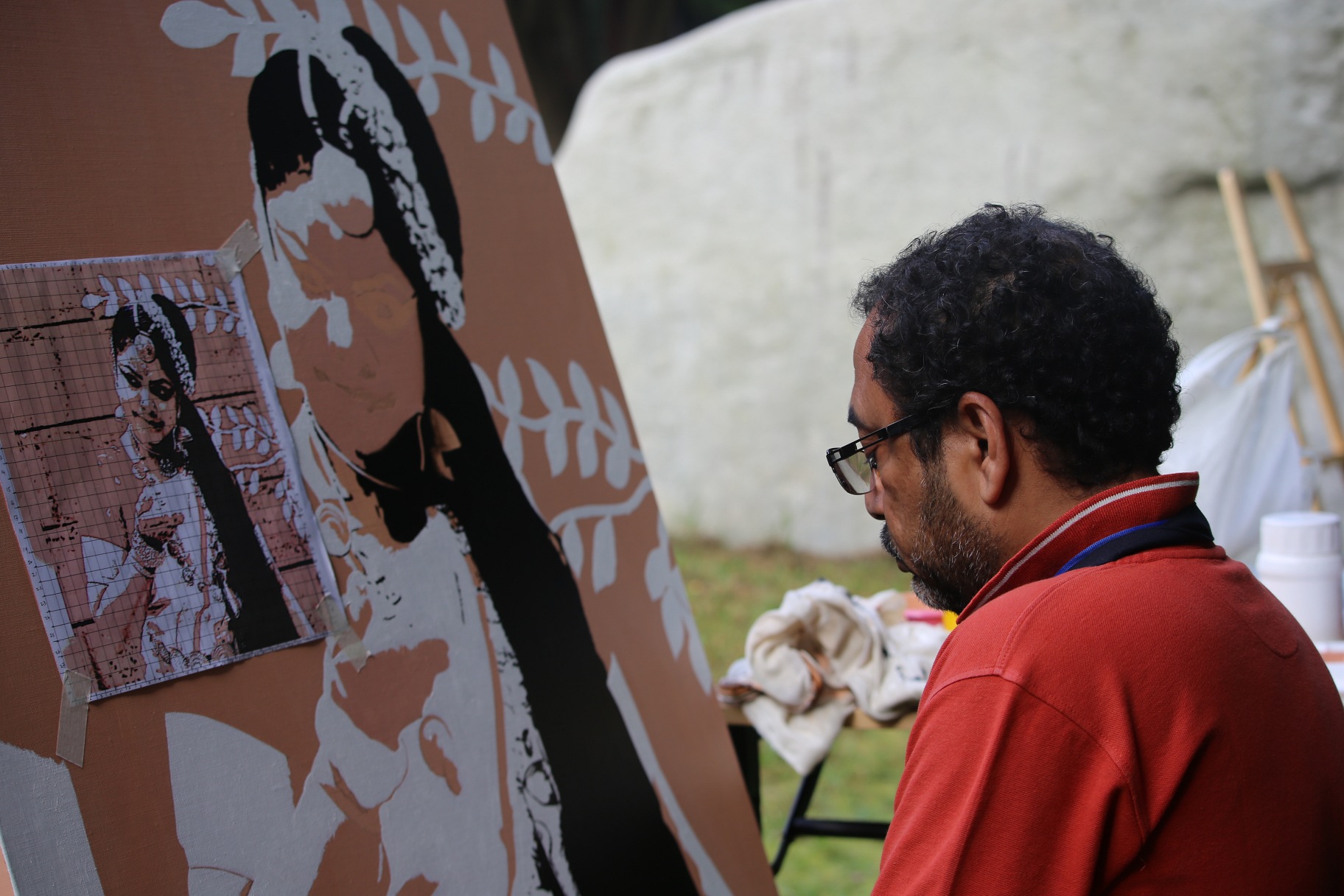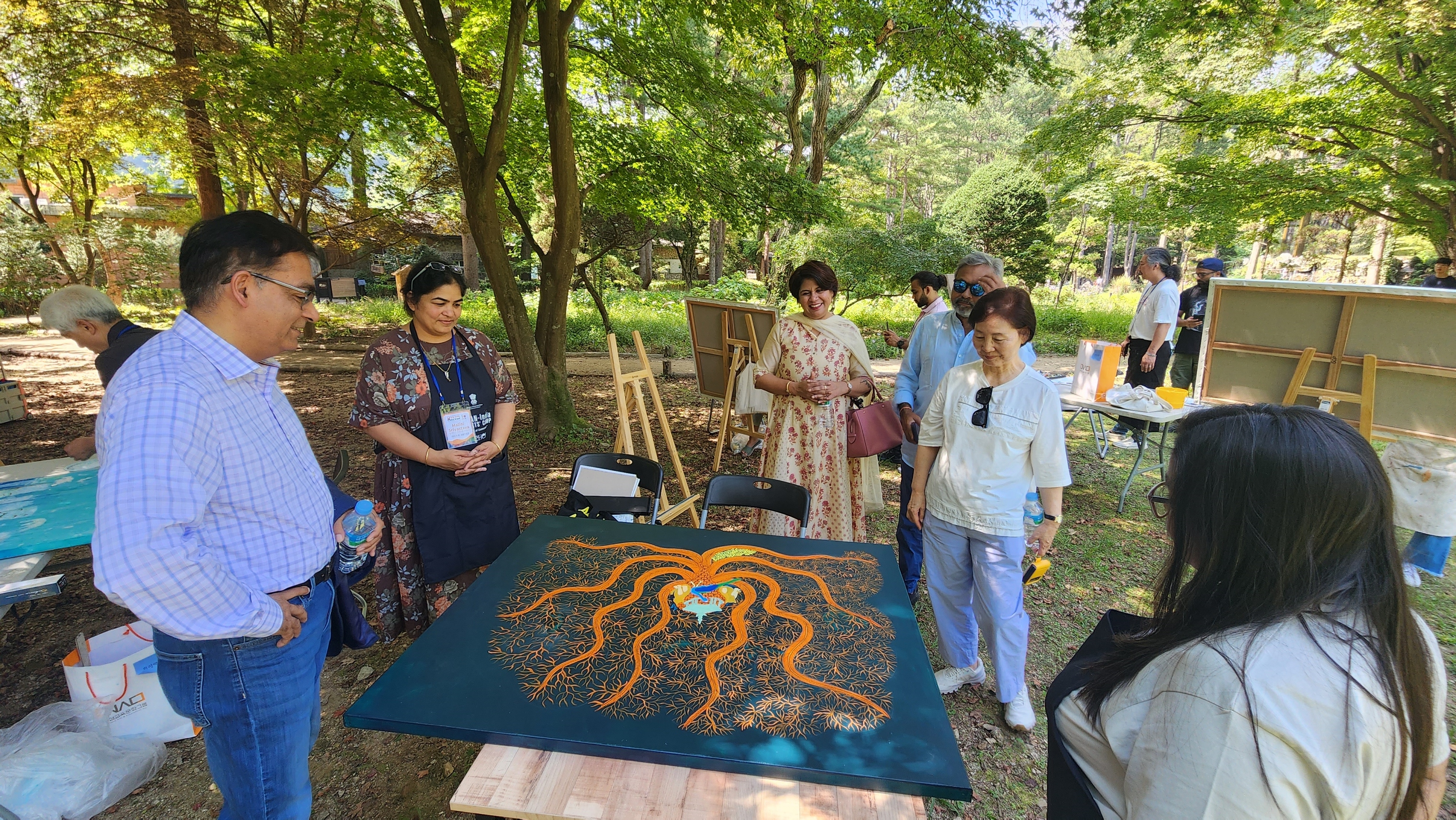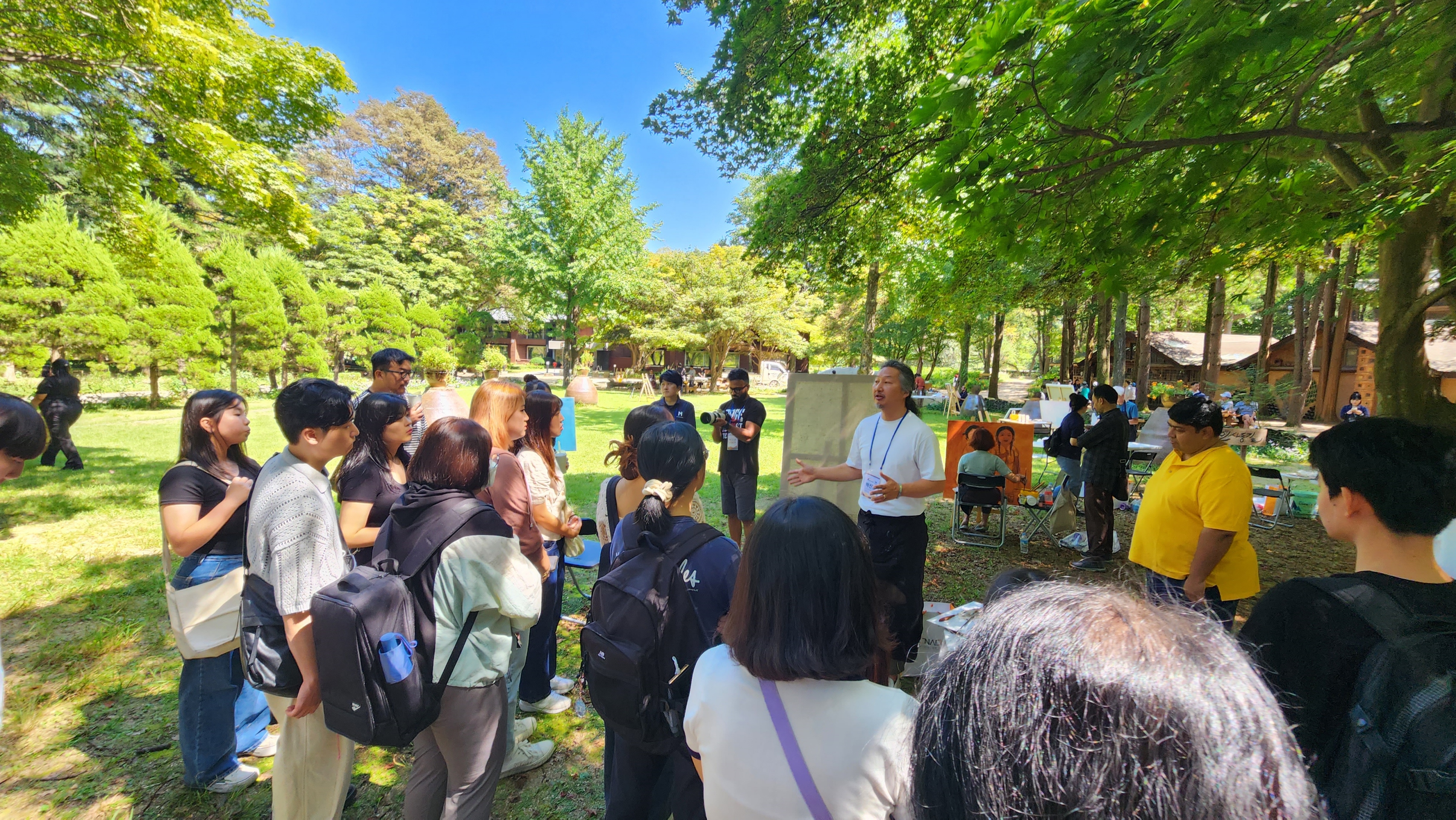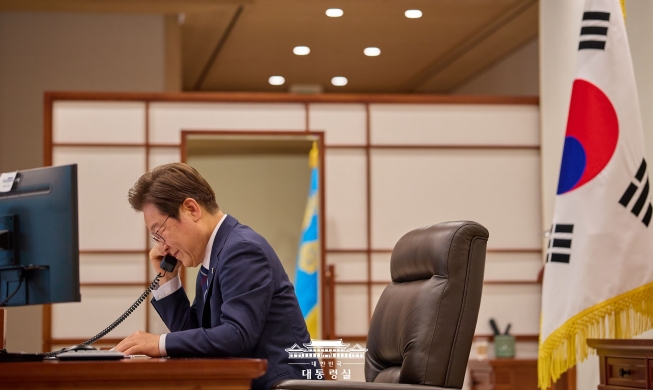- 한국어
- English
- 日本語
- 中文
- العربية
- Español
- Français
- Deutsch
- Pусский
- Tiếng Việt
- Indonesian
By Honorary Reporter Gayatri Vijay Kale from India
Photos = Nami Island Arts & Education
To mark the 50th anniversary of diplomatic relations between Korea and India, this year's Korea-India Artist Camp was held from Sept. 5-14 on Nami Island in Chuncheon, Gangwon-do Province. Ten artists each from both countries gathered under the theme "Tagore and Nature -- A River" to promote bilateral cultural exchange and artistic collaboration.

An Indian artist works on a painting at the camp.
In a Zoom interview on Sept. 25, Albert Kwon Jin-wook, the producer of this event, discussed the camp's role in fostering cultural ties and its contributions to artistic endeavors. As producer of the cultural affairs team of Nami Island Arts and Education, he plans and runs global exchange and cultural programs on the island, a famous tourist destination in Korea.
The following are excerpts from the interview.
How would you summarize this years' Korea-India Artist Camp?
The 2023 Korea-India Artist Camp was a 10-day event on Nami Island, bringing 10 artists each from Korea and India. Celebrating the 50th anniversary of bilateral relations, the event promoted bilateral cultural exchange and artistic collaboration.
Why was Nami Island chosen as the venue for this event?
Known for its cultural exchanges with India, Nami has an inspiring natural environment with facilities ensuring a seamless experience for participants including accommodation, meals and workshops. The island began cultural exchange with India in 2005 and has since hosted many exhibitions and festivals such as Diwali (India's biggest holiday of the year).
What workshops and activities did the camp offer?
We invited experts from fields like traditional Korean music including pansori (solo lyrical opera), kathak (one of India's eight major dance forms), yoga, art history and visual arts. Through these workshops, the artists got a glimpse of both cultures to stimulate creative inspiration. In addition, I tried to get artists closer through interactive programs.

This is an Indian artwork made at the camp.
How did the camp engage with the community in Chuncheon?
Contributing to the community was one of the camp's main purposes. Students in Chuncheon met the artists and works were used to create tile murals in the city's Gangchon Village. We selected five artists from Chuncheon and invited students from two schools in the province to meet the artists.
After the camp, we hosted an exhibition of works made at the camp on Nami Island and Kangwon National University. Through this process, we built the foundation for further development through follow-up projects such as residency and art exchange exhibitions.

A Korean artist holds a Q&A for visitors to the camp.
Which cities will host the traveling exhibition of the 20 artworks made at the camp?
Korean organizations in Seoul, Chuncheon and Daegu and those in India in Jodhpur, Pune and Chennai have had favorable responses to the exhibition. Based on these, we decided to hold the event in six cities in both countries.
What concluding message do you have about the camp and its mission?
Through this camp, I sincerely hope that the participating artists form close human relations and gain creative inspiration that contributes to their work. Based on these activities, we will continue active cultural exchanges between both countries.
msjeon22@korea.kr
*This article is written by a Korea.net Honorary Reporter. Our group of Honorary
Reporters are from all around the world, and they share with Korea.net their love and passion for all things Korean.
